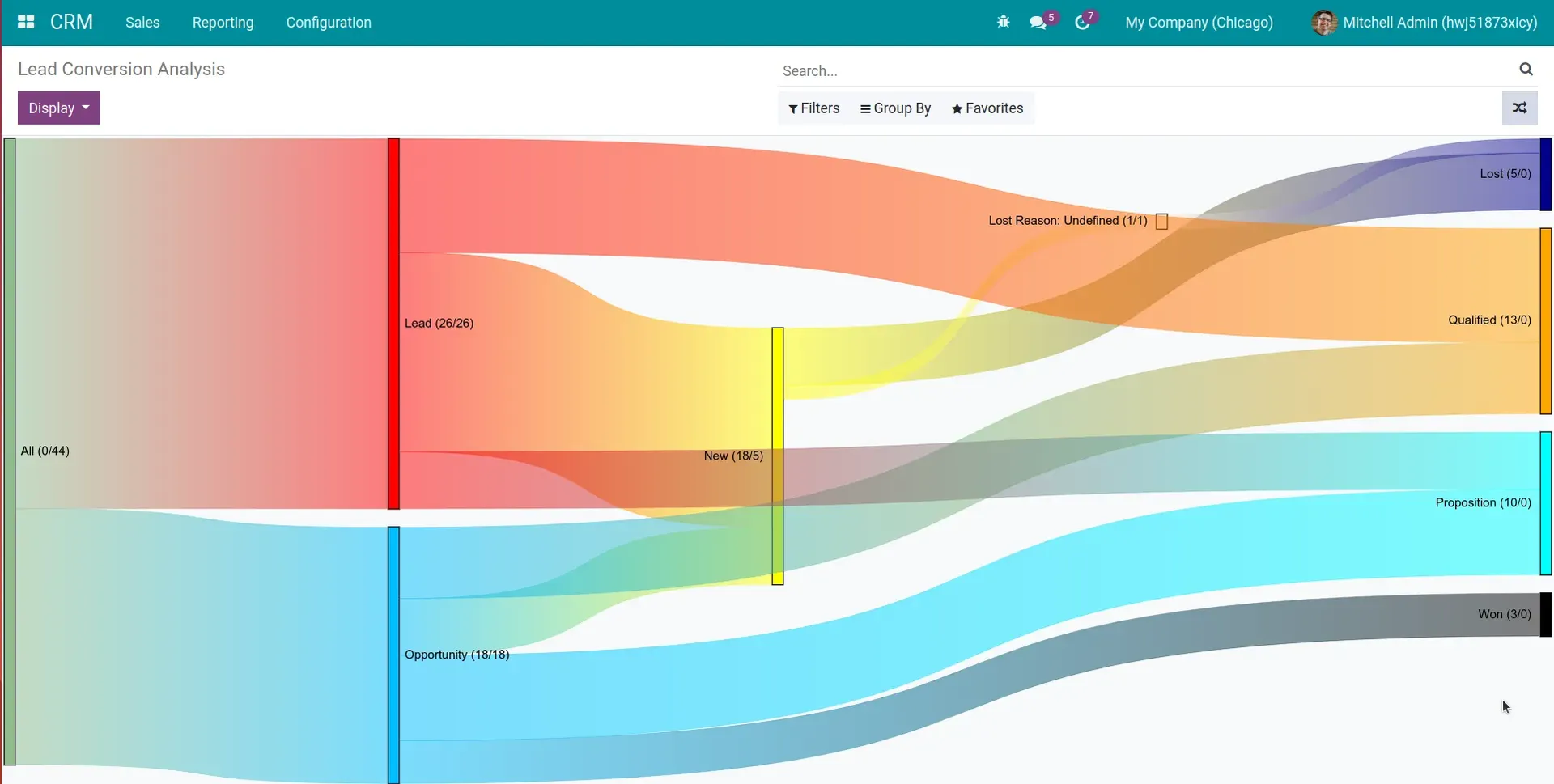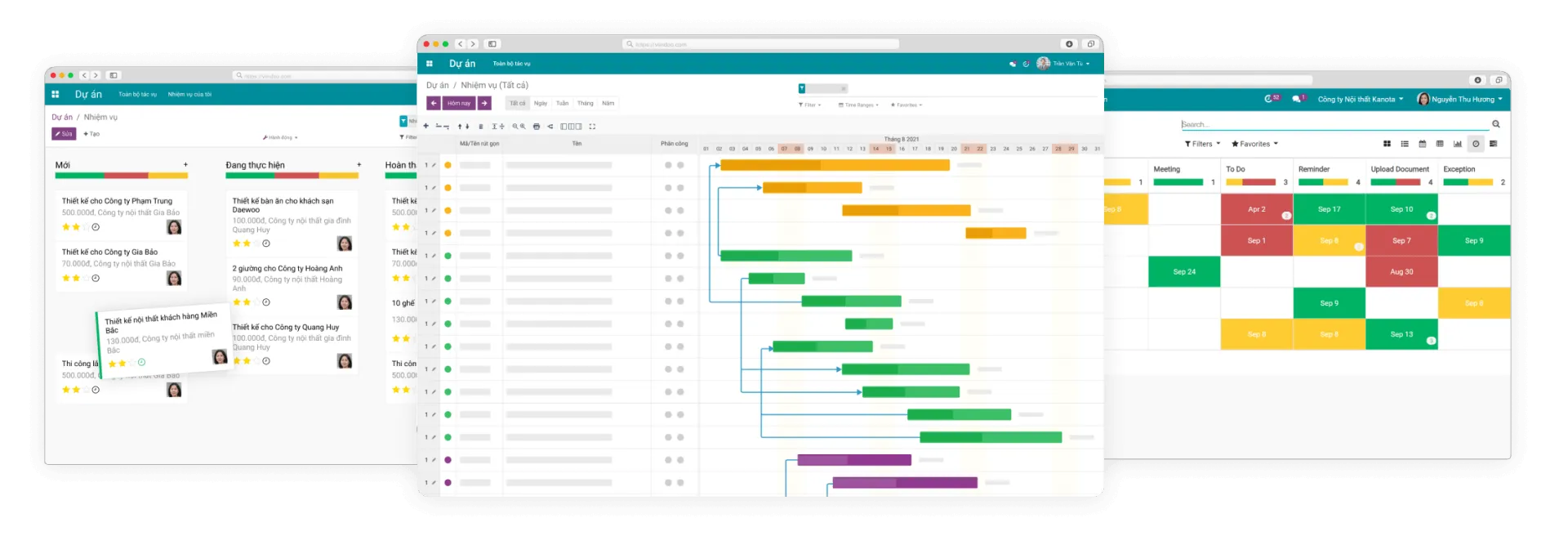As a business owner or manager, it is essential to understand how to increase employee productivity to maximize the potential of the team and achieve business goals. In this article, Viindoo provides practical strategies and tips to improve employee productivity and improve the overall efficiency of your organization.
>>>> Find Out: HR Software
Why Increasing Employee Productivity Is Important?
Organizations when paying efforts to increase employee productivity can achieve better business results and build a stronger, more competitive organization.

It is essential to improve employee productivity
Increase Revenue and Profitability
Increasing employee productivity can help boost revenue and profitability. When employees are productive, they can complete tasks efficiently and effectively, leading to better business results. This can lead to an increase in revenue and profitability for the organization, as employees are able to produce more output in less time.
Improve Employee Morale and Engagement
A high employee productivity rate can make employees feel that their work is meaningful and that they are making a valuable contribution to the organization. Therefore, they are more likely to feel motivated and engaged in their work. This can lead to a positive work environment and a higher level of job satisfaction among employees.
Enhance Customer Satisfaction
The improvement in employee productivity can lead to higher customer satisfaction. When employees are productive, they can provide better customer service and deliver products and services in a timely manner. This can lead to higher levels of customer satisfaction, which is crucial for retaining customers and building a positive reputation for your organization.

Employee productivity improvement can result in improved customer satisfaction
Increase Efficiency and Reduces Costs
Increasing employee productivity can also increase efficiency and reduce costs for the organization. Productive employees can complete tasks in a shorter amount of time, reducing the need for overtime and additional resources. This can lead to cost savings for the organization, as well as more efficient use of resources.
Promote Innovation and Creativity
The attempt to improve employee productivity can also facilitate innovation and creativity within the organization. When employees are productive, they have more time and energy to focus on developing new ideas and improving processes. This can lead to a more innovative and competitive organization, which is crucial for staying ahead of the competition.

Promoting innovation and creativity is beneficial
Strategies To Increase Employee Productivity
Improving employee productivity requires a strategic and thoughtful approach. Let’s explore how to improve employee productivity in the workplace.
Set Clear Goals and Expectations
Setting clear goals and expectations is critical for improving employee productivity. It enables employees to focus on what is essential and directs their efforts toward achieving specific outcomes. When setting goals, it's essential to ensure that they are SMART, meaning they are specific, measurable, attainable, relevant, and time-bound. This clarity helps employees understand what is expected of them and how their performance will be evaluated.

Setting clear goals and expectations is an effective strategy
>>>> See More: Employee assessment system
Provide Regular Feedback and Recognition
Regular feedback and recognition are critical for improving employee productivity. Employees need to know how they are performing and what they can do to improve. By providing constructive feedback, you can help employees identify areas for improvement and provide them with the necessary tools and resources to enhance their skills.
Recognition is also essential as it motivates employees to work harder and achieve more. It can be as simple as acknowledging a job well done, providing a small token of appreciation, or giving a shout-out in a team meeting. Recognition can go a long way in boosting employee morale and increasing productivity.
>>>> Read About: How To Measure Employee Productivity: Effective for Managers
Invest in Employee Training and Development
Investing in employee training and development is another effective way to improve work productivity. Providing employees with the necessary skills and knowledge to perform their jobs more efficiently and effectively can make a significant difference. It not only enhances their confidence and job satisfaction but also makes them feel valued and appreciated.
Encourage Collaboration and Communication
Collaboration and communication are essential for improving productivity in the workplace. Encouraging employees to work together and communicate effectively can help them solve problems, share knowledge, and work towards common goals. It's important to create an environment where employees feel comfortable sharing their ideas, opinions, and feedback openly.

Good collaboration and communication can boost employee productivity
Provide a Positive Work Environment
A positive work environment can significantly impact employee productivity. Creating an environment where employees feel valued, supported, and appreciated can increase their engagement and motivation to perform at their best. It's essential to ensure that the workplace is clean, organized, and well-maintained and that employees have access to the necessary tools and resources to perform their jobs.
Provide Incentives and Rewards
Incentives and rewards can motivate employees to increase their productivity. Companies like IBM and Microsoft provide their employees with bonuses and recognition for exceptional performance. These incentives can encourage employees to work harder and smarter, leading to increased productivity and better business results.
Offer Flexibility and Work-Life Balance
Offering flexibility and work-life balance can also increase employee productivity. Companies like Adobe and Cisco offer their employees flexible work arrangements, such as remote work and flexible hours. By offering flexibility and work-life balance, employees can better manage their personal and professional responsibilities, leading to increased productivity and better business results.
Implement Productivity Tools and Technology
Productivity tools and technologies such as HR software or OKR software can help streamline workflows, reduce manual tasks, and increase productivity. These include project management software, time-tracking tools, automation software, and communication tools. Implementing these tools can help employees work more efficiently and effectively, freeing up time to focus on higher-value tasks.

Tools and technology pave the way for high productivity
Improving employee productivity is critical for the success of any organization. This should be an ongoing process that requires businesses to have commitment, dedication, and continuous improvement. In this article, Viindoo gathers several strategies to increase employee productivity. Hopefully, businesses find this article meaningful and have more ideas on how to improve employee productivity.
Key performance indicators commonly used to assess employee productivity
To assess increased employee productivity by job position, you can use specific metrics and measures tailored to each job role. Here are some key performance indicators (KPIs) and metrics you can use:

Job Output
Measure the quantity of tasks or products completed by an employee within a specific time frame. This metric depends on the nature of the job, such as the number of orders processed, projects completed, or products manufactured.
Job Completion Time
Evaluate the time it takes for an employee to finish a specific task. This can be relevant for roles that require quick task completion, such as project management or customer service.
Job Quality
Assess the quality of work completed by using specific criteria tailored to each job role. This may involve error checks, accuracy assessments, or customer satisfaction evaluations.
Job Automation
Measure the extent to which job tasks can be automated to save time. If a job can be automated to enhance productivity, this metric can assess the contribution of automation.
Time Management
Evaluate an employee's ability to manage their time effectively, especially in roles that require multitasking.
Customer Satisfaction Improvement
Measure productivity enhancement through improved customer satisfaction, especially for positions related to customer service.
Resource Efficiency
Assess efficiency in resource utilization, such as materials, human resources, or working hours.
Increased Project Completion
Evaluate the number of projects completed on schedule, especially for project management roles.
Reduced Downtime
Measure the reduction in downtime in work or production, suitable for roles related to production management.

To assess increased employee productivity by job position, create specific and relevant KPIs tailored to job descriptions and your objectives. Then, regularly collect data and conduct evaluations to ensure that these metrics are being met and that employee productivity is improving.
ERP system can help automate the evaluation of key performance indicators (KPIs)
Here are some specific key performance indicators (KPIs) and ERP system can help automate the evaluation of key performance indicators (KPIs)for different job positions within a business to assess increased employee productivity:
For Sales Representatives
- Sales Revenue: Measure the total sales revenue generated by each sales representative within a specific time period.
Viindoo sales targer Module
- Number of New Clients Acquired: Track the number of new clients or customers brought in by each sales representative.
- Conversion Rate: Calculate the percentage of leads or prospects that are converted into actual sales.

Viindoo Sankey Chart - Tracking Lead Conversion Rate
- Average Deal Size: Measure the average value of each sale made by a sales representative.
- Sales Calls or Meetings: Track the number of sales calls or meetings conducted by each representative.
Read more: All about Sales Performance Analysis: Key Metrics and Tools
For Customer Service Representatives
- Customer Satisfaction: Collect customer feedback and evaluate customer satisfaction scores or ratings.
- Response Time: Measure the average time it takes to respond to customer inquiries or resolve issues.
- Ticket Resolution Rate: Track the percentage of customer support tickets that are successfully resolved.
- Number of Cases Handled: Measure the number of customer cases or inquiries handled by each representative.
Read more: Viindoo Helpdesk Application
For Project Managers
- Project Timeliness: Assess whether projects are completed on time and within budget.

Project Timelines with Viindoo Project
- Project Completion Rate: Track the percentage of projects successfully completed.
- Client Feedback: Gather feedback from clients regarding project management effectiveness.
- Resource Utilization: Evaluate how efficiently resources (e.g., manpower, budget) are allocated and utilized.
Read more:
For Manufacturing Operators
- Production Output: Measure the quantity of products manufactured or processed within a specific time frame.
- Quality Control: Track the number of defects or errors in the production process.
- Downtime: Monitor the amount of time production is halted due to equipment issues or other factors.
- Material Waste: Measure the amount of raw materials wasted during production.

Read more:
For IT Professionals
- System Uptime: Assess the availability and uptime of IT systems and networks.
- Resolution Time: Measure the time it takes to resolve IT issues or support requests.
- Cybersecurity Metrics: Track security incidents, breaches, or vulnerabilities.
- Software Development Metrics: For software developers, KPIs may include lines of code written, bug fixes, and project completion milestones.
These are just examples, and KPIs can vary widely depending on the specific roles and goals of your business. It's essential to align KPIs with the job positions and objectives of your organization, regularly collect data, and use these metrics to monitor and improve employee productivity.
In summary, evaluating employee productivity based on their job positions is an essential part of business management. It helps organizations identify the strengths and weaknesses in each employee's work approach, allowing for the optimization of resources and overall productivity. Using specific metrics and tools like ERP systems can automate the evaluation process and provide detailed information for making informed decisions.
However, to achieve success, productivity assessments must be conducted fairly and equitably. This requires collaboration and support from employees and managers, as well as transparency in setting metrics and conducting evaluations. It's also essential to remember that productivity assessment is not just about measuring outcomes but also about fostering employee development and creating conditions for their optimal growth.
In the rapidly changing business world, continuous improvement and adaptability are crucial. Productivity evaluation serves as an important tool for monitoring and ensuring the organization's development and success in the future.
